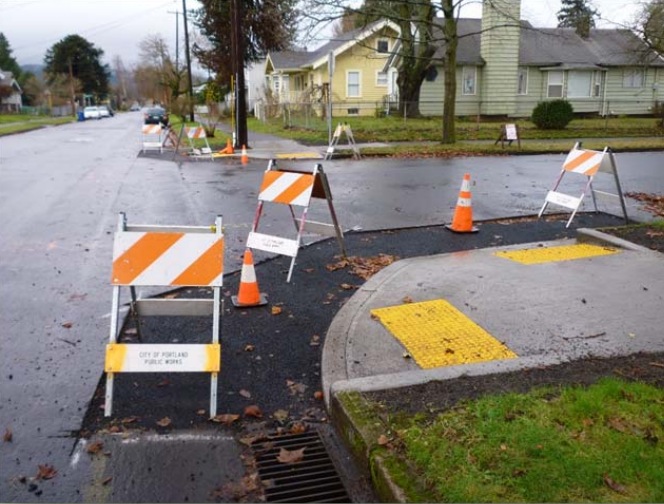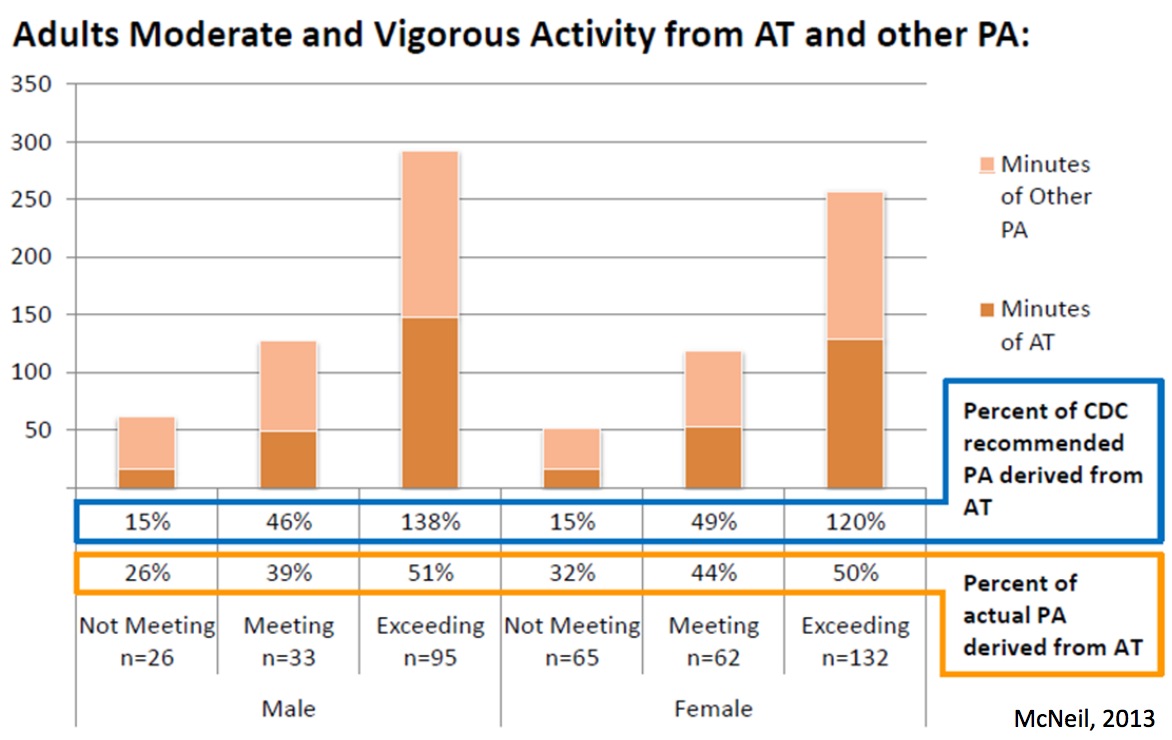ACTIVE LIVING RESEARCH
 Background
Background
Increasingly, promoting active travel is recognized as a public health policy alongside other concerns like congestion and greenhouse gas reduction. This is true not only for recreational travel but for everyday utilitarian travel as well. For many adults, walking for daily travel can be a substantial part of overall physical activity. While policy and funding have begun to reflect the importance of community walkability, much is still unknown about how well policies reflect actual preferences toward different walking environments. The purpose of this study is to better understand the types of routes pedestrians prefer using revealed preference GPS data.
Objectives
The study’s main objective is to estimate a model of pedestrian route choice preference. The results of the model can be used to understand the willingness of people walking to go out of their way to avoid negative features and experience positive features along a route. The model is estimated in a way that would allow incorporation into traditional regional models of travel demand to better represent walking options.
Methods
We estimate a discrete choice, logit-based model of pedestrian route choice using GPS data. The person-based GPS data were collected as part of a larger longitudinal study of travel behavior in Portland, Oregon from 2010-2013. Data for 1,167 walk trips by 283 adults were available for analysis. Up to 20 alternatives to the observed path were generated for each walk trip using a random walk-based algorithm developed by Freijinger et al. (16). A path size logit model was estimated, accounting for both the alternative selection process and any overlap between the path options. Attributes of the person, trip, and walking environment were included in the models.
Results
We find that pedestrians are sensitive to attributes of the walking network, intersection crossing aids, and elements of the street and block face environment along urban routes. People walking are willing to go out of their way to use more attractive facilities, but their tolerance for detours is limited, perhaps more so than for cyclists. Neighborhood-scale commercial streets might serve as both attractive destinations and walking routes. Alleyways and unpaved streets do not seem to be useful to pedestrians, who only will use them if the distance saved is large. Terrain is perceived as a barrier only when very steep, and then only in the uphill direction. Finally, we find that joint travelers may prefer more direct routes than solo travelers. We find no significant differences in route preferences for female pedestrians.
Conclusions
When walking for utilitarian purposes, pedestrians do not choose their path at random but instead to maximize the utility of the route. Elements of the built environment can enhance or detract from a potential route. Both the street and adjacent walking environment correlate with route attractiveness.
Implications
Implications for practice and policy are twofold. First, it is useful and possible to model utility walk travel on equal footing with other travel modes such as driving, transit, and cycling. Pedestrians in our study show a preference for environmental attributes in addition to distance. They do not simply choose the shortest path between an origin and destination. While this is good news for policymakers, the second major implication is that people walking have a limited tolerance for going out of their way, perhaps lower than that of cyclists. For example, crossing aids must be densely placed along major streets to be useful to pedestrians. Other important findings for practice include an apparent dislike of unpaved streets and alleyways as walking options and a preference for neighborhood scale (non-arterial) commercial streets.
View full version (activelivingresearch.org): Where Do People Prefer to Walk?
About Active Living Research
activelivingresearch.org
Our mission is to work with governments, the private sector, and advocacy groups to apply the lessons of research to building great communities. We aim to make activity-friendly communities the “norm” in the USA and beyond. We want to create models of working with communities, across boundaries, and against constraints to implement the lessons of active living research.
Tags: Active Living Research, Pedestrian, Walkability, Walking







 RSS Feed
RSS Feed